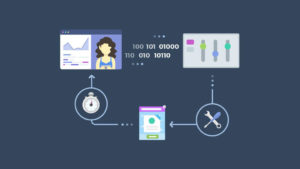
Mobile game developers are still torn on whether advertisements are a monetisation opportunity or necessary evil. According to deltaDNA’s annual ad survey, developers are more confident overall in their marketing strategies but struggle to balance ad revenue with player experience.
DeltaDNA has published the results of its annual in-game advertising survey. The study, which surveyed 336 developers in the mobile free-to-play (F2P) market, examines how ad strategies have evolved over the last several years.
Respondents were split nearly 50/50 between those developing casual titles (55 percent) versus core games (45 percent).
Casual games tend to host more advertising than core titles at 95 percent and 76 percent, respectively. Developers of casual titles are more aggressive with advertising strategies, the survey found. Ads are shown to players during the first session, although a majority of respondents claim to show only one ad per session thereafter.
Rewarded videos, which grant players in-game bonuses for watching an ad, account for the highest usage rate among respondents at 65 percent. Interstitial and banner ads round out the top three, although banner ads are on the decline, deltaDNA notes. Playable ads serve as miniature game demos and are favoured by 21 percent of respondents compared to 12 percent in 2017.
When choosing an ad strategy, the biggest concern among both casual and core developers was player churn, followed by lower levels of player enjoyment. Core game developers were particularly concerned about the impact of ads on in-app purchases (IAP), while casual titles were worried about app store ratings.
Regardless of concerns, in-game advertising plays a major role in developer income and even higher than last year. In 2017, only 10 percent of casual games earned more than 80 percent of their revenue from ads, but this year, that number jumps to 16 percent. Likewise, half of core games made more than 20 percent of total revenue from advertising but that number jumps to 70 percent in 2018.
A majority of ads are sourced from multiple networks, the survey found, with 59 percent citing between two and five. Over the last three similar surveys, this number has dropped 10 percent overall. In fact, more respondents used a large number of ad networks last year and now 27 percent turn to a single source.
Developers have become more confident in their advertising strategies. A majority of respondents view these strategies as “balanced,” followed by “experimental.” The number of developers who consider themselves as “confident” has grown by 55 percent.
In 2016, deltaDNA asked developers if they viewed advertising as a “necessary evil.” Just over half said yes at the time, compared to 36 percent today.
Source: A.List

You must be logged in to post a comment Login